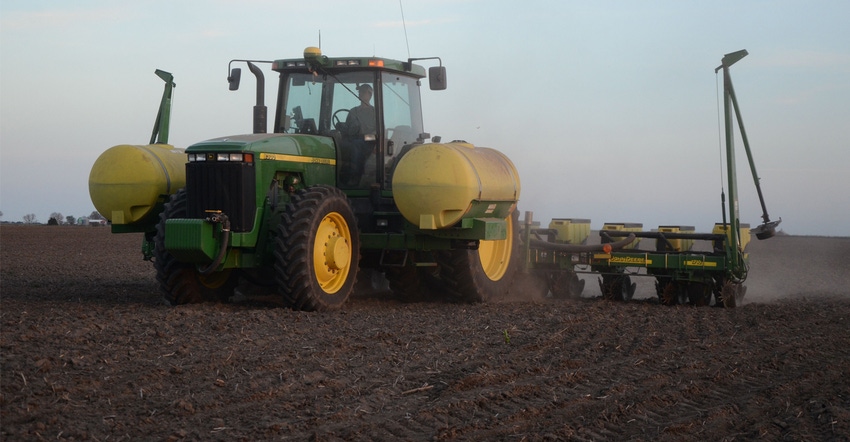May 10, 2017

Planting is off to a slow start for some parts of Nebraska. According to the latest USDA's Crop Progress Report, about 50% of the Nebraska corn crop was planted as of the beginning of this week, while 13% of the soybeans were planted. While not far off from last year, both are at least five percentage points behind the five-year average.
However, at the local level, those numbers can vary significantly depending on where you're at in Nebraska. For many in east-central and northeast Nebraska, planting has been delayed thanks to continued rainfall and cooler temperatures.
Nathan Mueller, Nebraska Extension cropping systems educator in Dodge and Washington counties, notes only about 10% of the corn acres have been planted in east-central Nebraska, compared to only about 2% of the soybean acres.
"I've talked to corn growers that are anywhere from not started to 30% done with planting," says Mueller. "There are some people that got out and were pretty aggressive, and some that held off because of the forecast."
This year's conditions, while similar, are slightly different from last year, Mueller adds. Last spring started off warm and dry in March, and then switched to wet in mid-April. This year, it's drier than last year, but cooler as well.
"The people that planted before the rain, they called asking should I have planted?" says Mueller. That is, was it a good idea to plant before the cool, wet weather set in? Corn and soybean seeds imbibe or take up water after planting. Cold water taken up during the first 48 hours after planting corn causes imbibitional chilling, which likely results in leakage of cell solutes and sugars, reducing growth rate, and interfering with growth rate of the emerging seedling. For soybeans, it's 24 hours after planting.
"It's really about that window after what the conditions are like, if you planted Sunday and temperatures drop off, because you absorbed water at 55 degrees in that first 48 hours after. But at the same time, even if you had planted 48 hours before those freezing temperatures, you're not taking on any growing degree units when it gets that cold."
To the south in Saunders County, most of the corn has yet to be planted. "The calendar keeps moving forward, but we haven't had weather that allows us to get in and put seed in the ground," says Keith Glewen, Extension educator in Saunders County.” As of May 3, Saunders and surrounding counties were at about 5% to 10% of the corn planted.
However, Glewen notes that in recent wet years, when growers had a window, it didn't take long to plant. "In today's world, we can put seed in the ground pretty fast," he adds. "Everybody's ready to roll. Some will likely roll too soon, and there will potentially be issues with sidewall compaction."
It's a different situation in south-central and southwest Nebraska, where nearly 75% of the corn crop is planted, and some has already emerged. Meanwhile, 25% of the soybean crop is planted. "We have some corn that's probably 3 to 4 inches tall," says Todd Whitney, Extension educator in Phelps, Gosper, Furnas and Harlan counties.
Like other parts of Nebraska, the cool, wet weather raised concerns of imbibitional chilling, but Whitney notes with the potential to repeat last year's wet spring weather, many growers are glad they planted when they did. "You potentially may have reduced corn yields up to 5% already by delaying planting," he says. "There's some risk involved, but overall I think we're in good shape."
For Brad Morner, and others who farm near York, the corn crop is off to a good start after planting in mid-April. "A lot of the commercial corn around here is planted. Some growers have their beans planted already," says Morner. "We finished planting our commercial corn and switched over to soybeans, and now we're going to switch back to seed corn in a couple days."
However, there were still delays due to cold weather. "We were right in the middle of planting a quarter of beans and decided to quit because cold weather was coming the next night and the rain was coming. We ended up quitting, and now we're glad we did," adds Morner. "We're still ahead of the game as far as planting pretty early in the season yet."
You May Also Like




